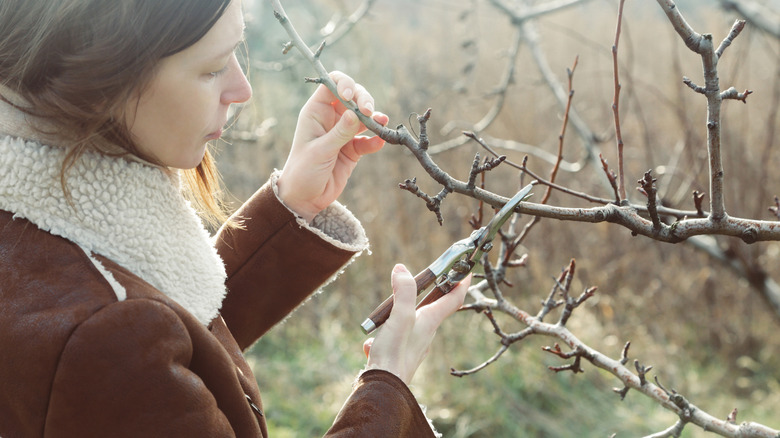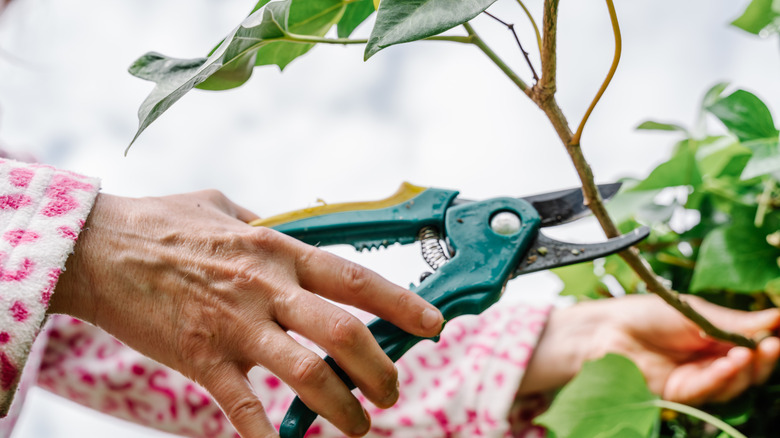The Disappointing Downsides Of Pruning Your Garden Too Early
Plants routinely need pruning to control their size, manage pests, maintain their health, and encourage new growth or flowering. Sometimes, it's necessary to prune plants to remove dead or diseased parts. And while you should avoid pruning certain plants in the winter (for example, spring-flowering species that bloom from the previous season's wood growth), late winter to early spring is generally the perfect time to prune trees and shrubs with no fruit or flowers. They're dormant at this time and exhibit no active growth. To get the job over with quickly, you may be tempted to prune all of your plants as early as possible after the year comes to an end. However, there are several downsides to pruning too early in the winter.
If you rush to grab those pruning shears before late winter sets in, you could do more harm than good for many plants, and roses, honeysuckle, and crape myrtle in particular. Pruning too early leaves your plant more susceptible to cold damage, since the severe freezes associated with this time of year can harm exposed plant tissue. If the plant is not fully dormant yet, it could also sprout new growth in response, which may suffer damage in the colder temperatures. If the plant is dormant, cuts made too early in winter might not heal for a longer time, as the plant is unable to grow tissue around the laceration.
Why waiting to prune until late winter is beneficial
When you prune before late winter (i.e. mid January), you invite the chance of cold damage. On the other hand, late winter pruning is beneficial for several reasons. For one, the plants should be fully dormant by now, reducing the chance of new growth sprouting and getting damaged by the cold. Any new, fresh cuts would be open only briefly before the plant leaves dormancy and begins to seal the wound. This period still lets gardeners take advantage of less active fungi and bacteria, reducing infection chances for the plant. Also, it's less likely that any fresh wounds will attract insects, because winter means many insects are also in their dormant period, and there's less of a chance that you'll get dangerous pathogens in the cut. Roses and various fruit trees are just some of the plants you should prune in late winter.
Pruning is meant to encourage healthy growth. Yet it's possible that you achieve the opposite effect: Prune too early, and your plant can respond with new growth only to see it suffer frost damage in the winter. However, if your yard is a little unsightly and you feel the call to prune now, there are a few flowers and trees that do well with pruning before late winter, including grapevines, oaks, Wisteria, and most deciduous trees.

